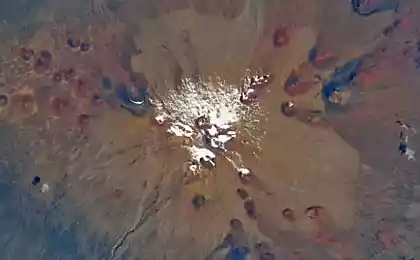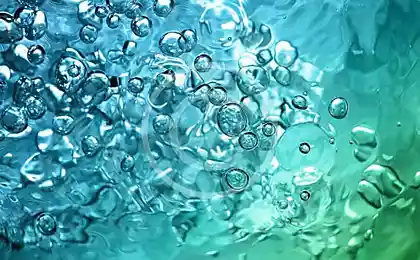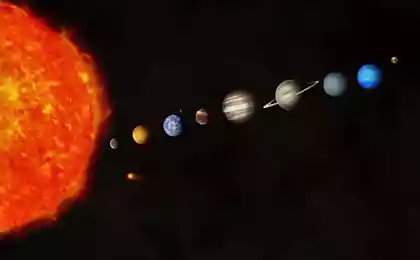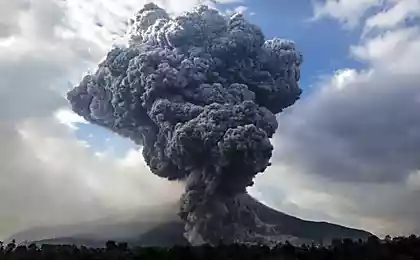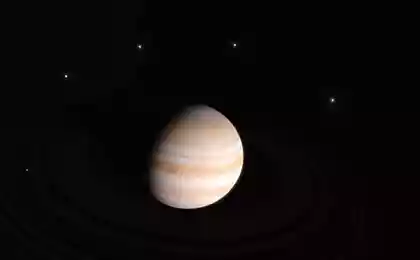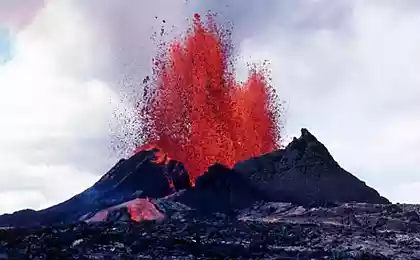820
The underground magma ocean explains the volcanic activity on Io

The closest of the four Galilean moons of Jupiter - Io - is radically different from the other satellites of Jupiter, as well as all the satellites of other planets of the solar system, from asteroids and comets.
There are no familiar mountains, valleys and craters. This is generally only known to astronomers rocky celestial body that does not no crater i>. No water in liquid or solid form. Furious bustling world of Io is undergoing constant violent volcanic eruptions. Sometimes, a few pieces at a time. Total surface is now more than 400 active volcanoes. The moon's surface is completely modified every few thousand years.
Fiery companion constantly korezhit enormous gravity of the planet. We are accustomed to the world that the gravity of our moon raises water of the oceans, which causes a rush. So, on Io "surge" in 8000 once more, and the gravity of Jupiter and another satellite in Europe raises no water, and solid crust satellite hundred meters every day.
Ships "Voyager" (1979), "Galileo" (1990-2000), "Cassini-Huygens" (2000) and "New Horizons" (2007) showed a terrible picture: the flaming volcanoes, fountains lava up to 400 km, tears bark from raging streams of magma, everything around is covered with frozen gray that colors the surface in shades of yellow, white, red, black and green colors.

volcanic eruption on Io Tvashtar i>
Scientists are studying the unusual volcanic activity on Io and try to ascertain the reasons for it. According to conventional theory, the activity is due to periodic heating of the bowels of the satellite by the friction that occurs when moving crust due to tidal gravitational effects of Jupiter.
The strength of Jupiter's gravity is so great that the crust is torn apart. It also moves relative to the mantle. As a result, the friction between the rock crust and the mantle is heated to liquid magma. Stone formation in liquid form increases in volume, hence the constant eruptions.

Previously, scientists assumed that the magma is formed only in isolated pockets between the solid crust and mantle. But recent observations made to revise the classical model. If everything was in accordance with the model, but we have seen volcanoes in certain areas of the surface, according to the location with respect to Jupiter's Io and Europe. It turned out that volcanoes erupt not where the model predicts , and in other places . More often - on the east 30-60ͦ predicted coordinate.
The observations led scientists to reconsider the model, according to the website NASA 10 September 2015. The new model provides that under the crust of Io is partially or completely molten liquid layer. That is a permanent underground magma ocean.

"It's hard to explain the pattern in so many eruptions, which are biased in one direction, using only the classical model with heating due to friction hardwood by tidal gravitational effects", - says Wade Henning (Wade Henning), one of the authors of research , published in the June issue of Astrophysical Journal Supplement Series i>.
The pattern can only be explained by a combination of heating of solid and liquid bodies. "The liquid component in a hybrid model best explains the increased volcanic activity in the equatorial region and the shift of eruptions in the east side, and what is happening at the same time heating the hardwood from the tidal gravitational effects may explain the eruption at high latitudes," - said Henning.
The illustration shows the result of the calculation model of heating the surface of Io from heat deep in the mantle (top) and from heat in the upper mantle, the asthenosphere (bottom). Scenario heating in the depths of the mantle provides a temperature rise closer to the poles, and the script heating in the asthenosphere - near the equator.
It turns out heating from Jupiter's gravity is so great that the liquid magma may always be present for the entire surface of Io. If it is, then this is an incredible find, по According to experts . Indeed, in this case, we can assume the existence of underground ocean of liquid water on the ice-covered Europe and Enceladus!

Europe i>
If even a weak gravitational influence of Jupiter might heat the mantle of the satellites and maintain the temperature of the underground water of the oceans, there may even be a life, считает Ethan Siegel (Ethan Siegel), Professor Lewis & Clark College and a columnist for NASA.
Source: geektimes.ru/post/262368/
Hydrogen production using machines with wood
SpaceX has posted a photo of the interior of the spacecraft Crew Dragon



